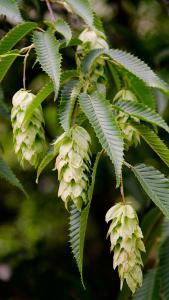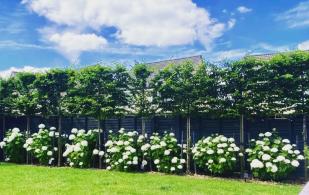Carpinus Japonica - Japanese Hornbeam
1. Add items to basket
2. Go to the basket
3. Enter your postcode in Delivery Price Check
Plant shape: Full standard
Trunk height: 1.6-1.8 m
Trunk girth: 8-10 cm
Rootball - supplied without a pot
Plant ID: 3200 100
Plant shape: Full standard
Trunk height: 1.8 m
Trunk girth: 10-12 cm
Rootball - supplied without a pot
Plant ID: 6142 100
Plant shape: Full standard
Trunk height: 1.8 m
Trunk girth: 12-14 cm
Rootball - supplied without a pot
Plant ID: 3201 100
To check delivery cost add your plants to basket, then you can type your postcode in our Quick Delivery Price Check.

Carpinus Japonica or Japanese Hornbeam
Carpinus Japonica, also called the Japanese Hornbeam, is native to Japan. However, in many parts of the world, it is highly coveted as an ornamental. This deciduous tree grows to a height of 12 to 15 meters. The diminutive size makes it an ideal choice of tree for smaller gardens, alongside roadways and beneath power lines. Its strong low-hanging branches are often a favourite for children to climb and play on.
Unlike the common European Hornbeam (Carpinus Betulus), the Japanese Hornbeam is smaller and more graceful. The leaves are also longer and typically measure up to 12 centimetres in length and 4 centimetres in width. Each leaf is heavily ribbed and almost looks like an accordion. The leaf's edge is serrated and the underside is heavily veined. During the autumn months, the foliage turns a brilliant shade of yellow that is sure to dazzle any onlookers.
During the spring months, fruit-like cones, often called catkins, develop on the tree. The catkins are loaded with seeds which are a favourite food source for birds and woodland creatures. The paper like catkin dangles from the tree and looks similar to a hop. They appear in shades of tan, cream and brown. As autumn fades to winter, the catkins dry out and persist into the winter months to create visual interest on the tree’s barren branches.
The Japanese Hornbeam grows best in full sun but it will tolerate partial shade. It is a hardy tree once established. Unlike other trees, the Carpinus Japonica is not picky about soil. It will grow in sandy or clay conditions. For optimum growth, choose a planting site that affords well-draining soil conditions. During the tree’s first year of growth, keep the soil moist but not overly wet. Moist soil helps the tree grow a large, diverse root system. Once established the Japanese Hornbeam is fairly drought tolerant and can subsist on infrequent watering or annual rainfall. Carpinus Japonica requires very little, if any, pruning. The branches of the hardwood tree are extremely strong and rarely break. The tree tends to develop low branches which can be trimmed up to make room to landscape beneath the tree if desired.
When fully grown, the Japanese Hornbeam tree provides shade to any landscape. Birds often seek refuge in the tree’s dense foliage and frequently use the branches as favoured nesting sites. It also attracts swallowtail butterflies to the garden. Carpinus Japonica is often trimmed into a small bonsai tree.











